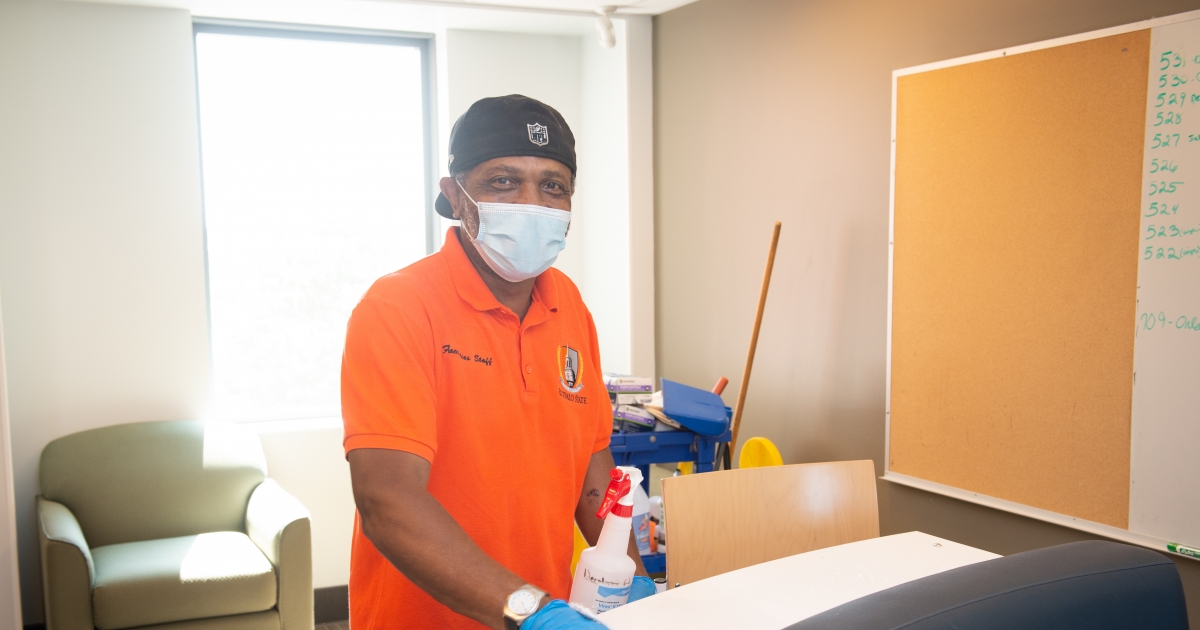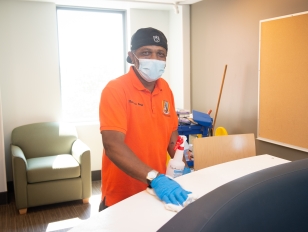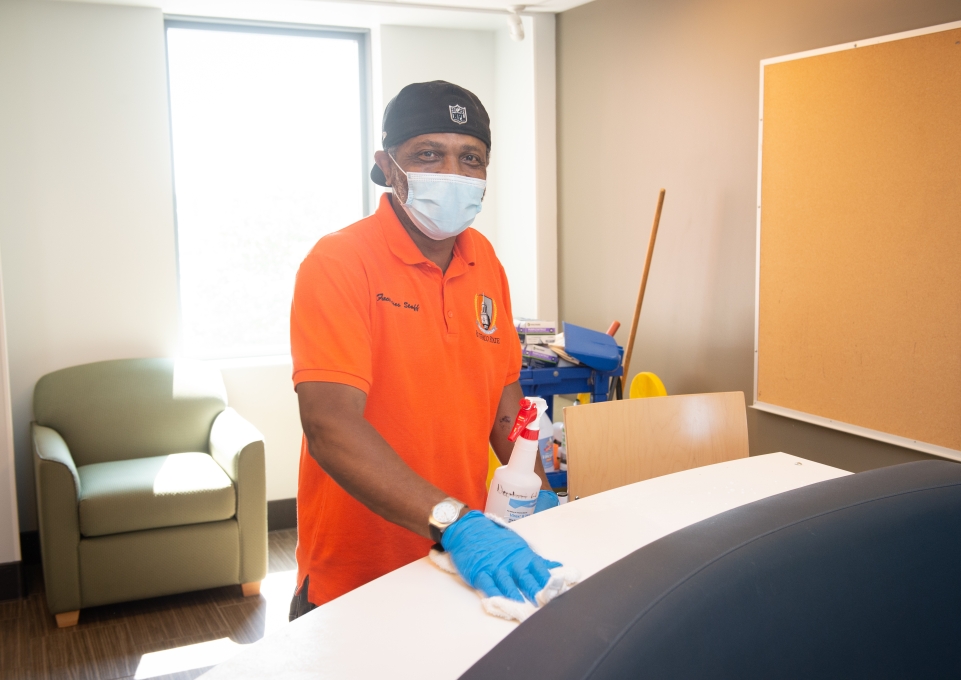
As Buffalo State College works toward reopening for the fall semester, it has implemented enhanced cleaning and sanitizing protocols to ensure the campus is as safe as possible.
Students, faculty, and staff will all have a role to play in making sure the campus stays clean and sanitized as well.
"Custodial staff have been working throughout the summer to prepare campus for the fall," said Steven Shaffer, Buffalo State director of facilities. "That work will continue through the fall semester, but it will be a team effort to make sure it’s done properly."
While the college custodial staff will continue to conduct comprehensive cleaning duties throughout campus, there will be an enhanced priority on sanitizing high-touch surfaces and high-volume areas. The staff will use hospital-grade virucides to clean and sanitize surfaces.
"The crews have been trained in how to perform disinfection and what the high-touch surfaces are," Shaffer said. "We have purchased hundreds of gallons of hospital-grade disinfectant. And it’s become somewhat routine now because the cleaning crews used this material to clean the buildings that were in use this summer."
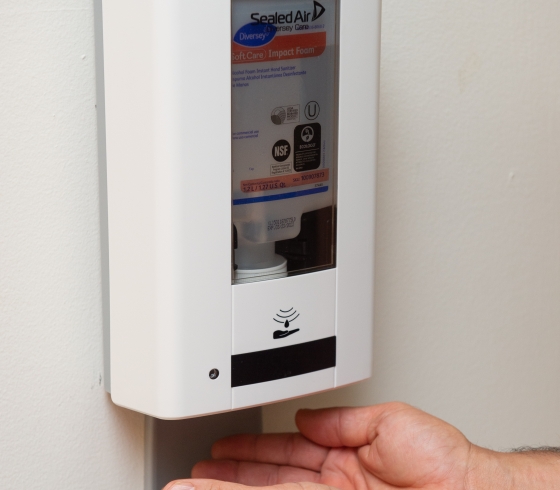
No-touch hand sanitizer stations have been installed in all of the campus buildings.
High-touch surfaces include all restroom surfaces, doors and doorknobs, exit door panic bar devices, light switches, desktops, chairs, pencil sharpeners, stairwell and ramp railings, elevator buttons, computer keyboards and mice, benches, and lockers. The cleaning staff will also clean all general-purpose computer lab equipment..
Disinfectants will also be provided to classrooms, office spaces, and residence hall bathrooms across campus, Shaffer said. That will allow faculty members and students to sanitize their classrooms and desks between classes. Without help, it would take an “army” of custodial staff to do this, he pointed out.
"We are providing sanitizing wipes in all of the classrooms in large dispensers," he said. "We're requesting that the faculty and the students assist where they can and sanitize their work areas in those classrooms."
The facilities staff is also installing MERV-13 air filters in the campus’s ventilation systems, in an effort to filter out particles of COVID-19. The campus typically uses MERV-8 filters. The higher the number, the smaller the particles the filters taken out of the air system.
"It will improve air quality on campus," Shaffer said.
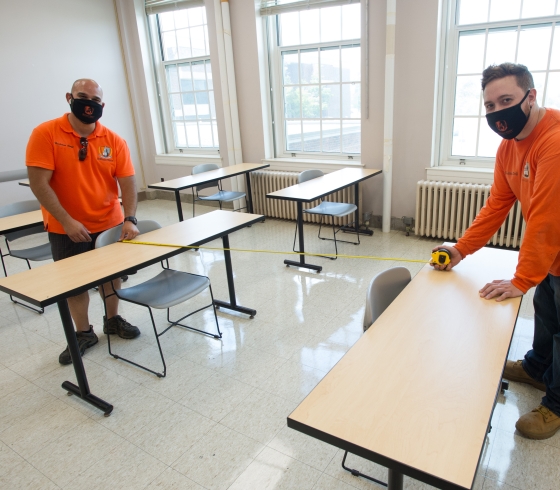
New furniture layouts are applied in classrooms and marked off seats in lecture halls to promote social distancing.
In rooms without forced air ventilation, like most of the residence hall rooms, opening the windows can be helpful. In rooms with air conditioning, opening the windows may increase air circulation, but the downside is that cooling and dehumidification won’t be effective and energy use will increase, Shaffer said.
If a case of COVID-19 does pop-up on campus, a group of specially trained custodial staff will be deployed to any areas the infected person has been to clean and disinfect the areas.
No-touch hand sanitizer stations have been installed in all of the campus buildings, and classroom furniture has been rearranged in order to make social distancing in the classroom possible.
"We've established new furniture layouts in many of the classrooms and marked off seats in lecture halls to promote social distancing," Shaffer said. "While the classrooms may have a different look this fall, we are taking all the precautions we can to keep students safely 6 feet apart."
In the dining areas on campus, all dining associates will wear masks and gloves, wash their hands frequently, undergo thorough daily wellness checks, practice social distancing, and sanitize all high-contact surfaces regularly.
Now that cleaning and sanitizing protocols are in place, keeping campus clean and safe will come down to the cooperation of campus members..
"We thank all members of the campus community for their help and partnership this semester," Shaffer said. "I believe if we continue to work together, we can keep each other healthy and safe."
Photo by Bruce Fox, campus photographer.
